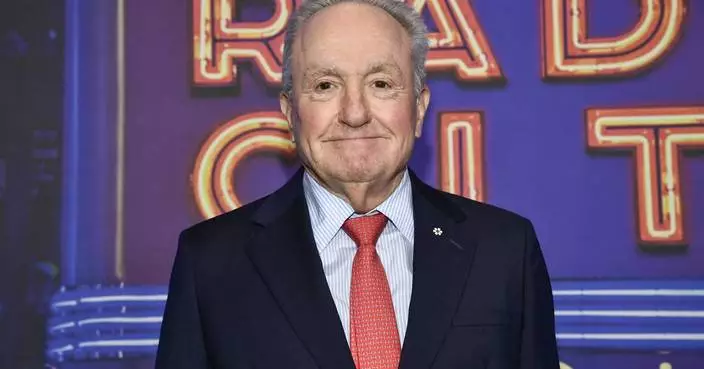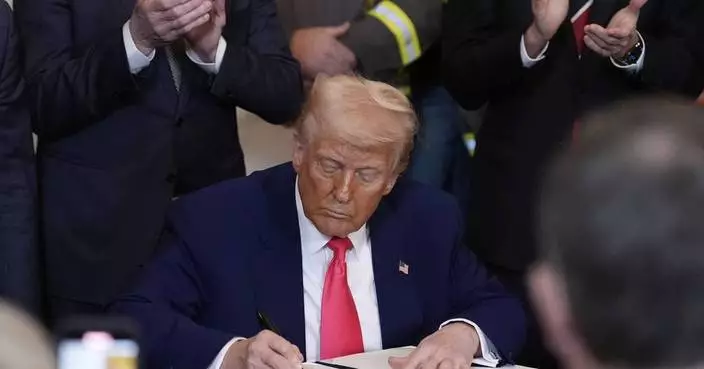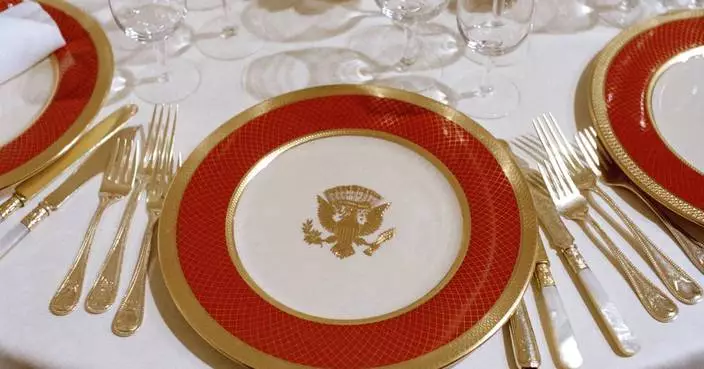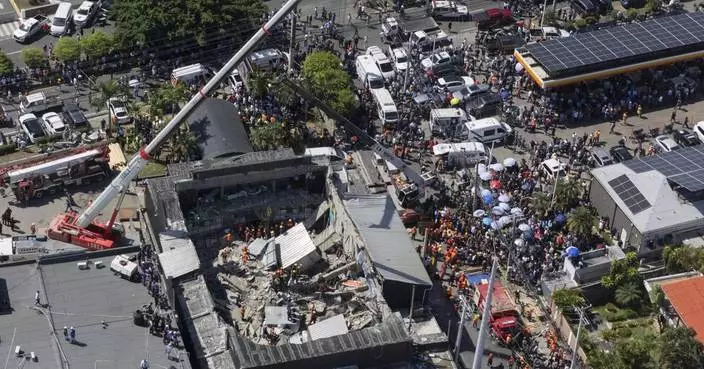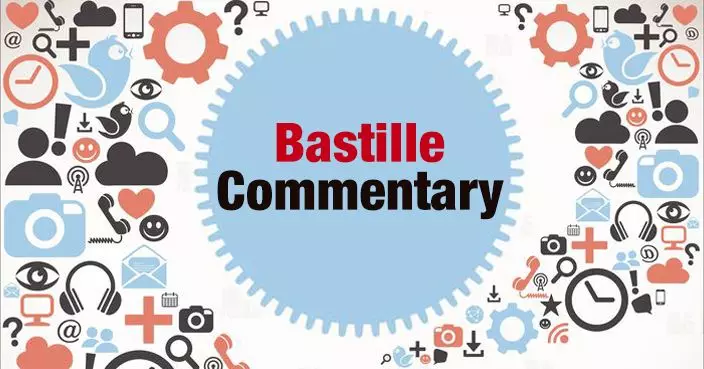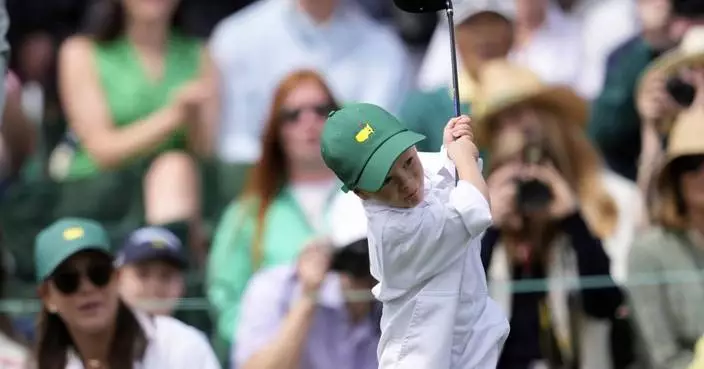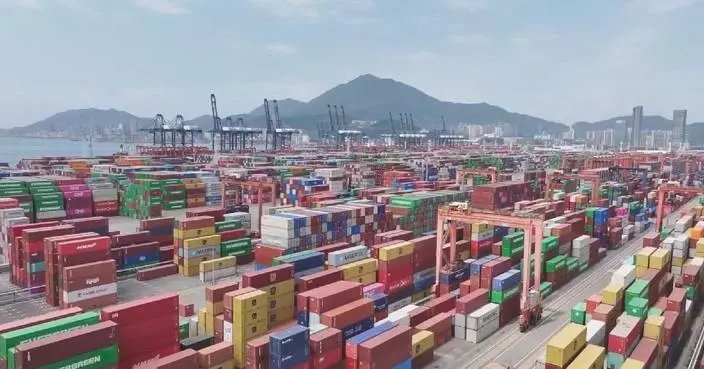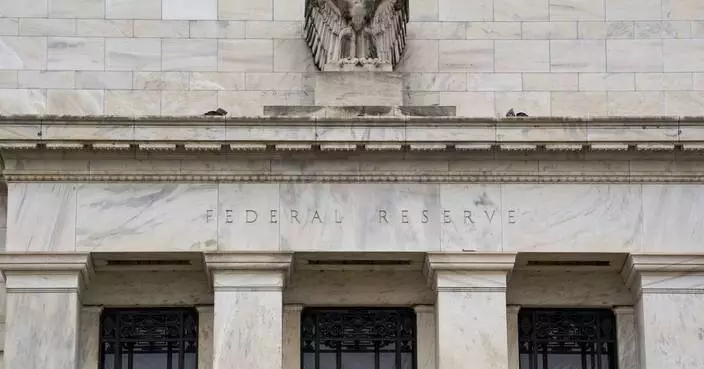DARLINGTON, S.C. (AP) — Chase Briscoe didn't get much time to revel in his Southern 500 victory the last time he was at Darlington Raceway. He plans to soak in some of the memories when he returns to the track this weekend.
Briscoe used a dramatic, three-wide pass late in the day to take the checkered flag last September in NASCAR's final regular-season race — a true walk-off moment — and gave his soon-to-be shuttered Stewart-Haas Racing team a shot at a series championship.
Briscoe's focus quickly turned to the playoffs and, after that, getting accustomed to his new Joe Gibbs Racing ride for 2025.
“It was kind of weird,” Briscoe said by phone this week. “You didn't get to celebrate because next week you're in the championship race when you didn't think you were going to be in it. It was a little bit different.”
The NASCAR Cup Series runs at Darlington with the Goodyear 400 on Sunday.
Briscoe will have more time to remember and recall his fantastic finish at the track “Too Tough To Tame,” when he held off two-time NASCAR champion Kyle Busch, who was also hoping for a final-race victory to make the playoffs.
Briscoe, like most of NASCAR's past winners at Darlington, calls it a career achievement in winning one of the sports crown jewels.
More importantly, he believes, there's a confidence that comes from having won at a place long known as one of the most difficult places to succeed on the circuit.
“The confidence that came from winning that race, even the respect level in the garage,” Briscoe said. “Everything changes after you win at Darlington, let alone the Southern 500. People just look at you differently.”
William Byron, who won the Daytona 500 to start the season, understands the effect a Darlington win can have. He took the spring event there in 2023 and felt the good feelings that a win there can bring.
“It feels good knowing you can make it around this place to win,” he said. “It's always been a track all drivers want to win on.”
Briscoe hopes he make it two in a row at Darlington. But this season, he's had a slew of adjustments to make after taking over JGR's No. 19 car previously driven by retired NASCAR champion Martin Truex Jr.
Briscoe acknowledged he's still getting used to the new team, new demands on him and higher expectations. He been told to be as critical of the car as possible so his technicians and mechanics can get the most out of a run.
"(It) has been a lot,” Briscoe said. “Honestly, I did not anticipate it being this different. I thought I would just do my normal thing and I'd go faster because the cars were better.”
Briscoe has to be much more serious and business-like in his approach during the week and at the track. At Stewart-Haas, his team knew they would not contend for wins most weekends and “we truthfully just had fun going to the racetrack.”
The bar is much higher at JGR where Briscoe's teammates in Christopher Bell and Denny Hamlin have combined to win four of seven NASCAR races this season.
“You're expected to go and win and be in the mix and if you're not, it's a huge disappointment,” he said.
Briscoe has been in the mix at times early this season. He gave Toyota its first-ever pole for the Daytona 500 and he's had a pair of fourths, at Daytona and Homestead. He's coming off a ninth-place finish at Martinsville a week ago.
And he welcomes stepping things up if it means he's bringing wins to JGR.
“It's the kind of place I'm excited to hopefully be at for a long time,” he said. “The capability of the car is there and that's exciting for me as a driver.”
AP auto racing: https://apnews.com/apf-AutoRacing

Crew members for Chase Briscoe perform a pitstop during a NASCAR Cup Series auto race at Homestead-Miami Speedway in Homestead, Fla., Sunday, March 23, 2025. (AP Photo/Terry Renna)
WASHINGTON (AP) — In the aftermath of this week's tariff whiplash, President Donald Trump is deciding exactly what he wants out of trade talks with as many as 75 nations in the coming weeks.
Trump is also figuring out next steps with China. He upped his tariffs on Chinese goods to 145% after China placed retaliatory taxes of 84% on imports from the U.S. While his 90-day pause on other tariffs caused the stock market to rally on Wednesday, countries still face a baseline 10% import tax instead of the higher rates announced on April 2.
Kevin Hassett, director of the White House National Economic Council, told Fox News’ “Fox and Friends" on Wednesday that the administration already has “offers on the table from more than 15 countries.”
Hassett said the next step will be determining exactly what Trump wants out of the negotiations.
“We have a meeting today with all the top principals where we’re going to present to the president a list of what we think his priorities might look like," Hassett said. "And I’m sure he’s going to, you know, have his own ideas about where to move things.”
Here's a look at where Trump's tariffs showdown stands:
With $28.9 trillion in publicly held debt, the U.S. government can still be beholden to the investors who lend it money. Trump might be willing to run roughshod over political rivals, judges he dislikes and a host of political norms, but the bond market showed Wednesday that it can temper his plans.
Going into Wednesday, the interest rate on a 10-year U.S. Treasury note was increasing and approaching 4.5%. That meant the U.S. government was having a tough time finding possible buyers for its debt, as market participants were wondering if Trump's tariffs had caused foreign buyers to sour on the U.S. government. Higher interest rates for the government could trigger even higher mortgage rates and auto loans for consumers, among other problems.
Trump on Wednesday said investors were getting “yippy,” but after his tariff pause he described the bond market as “beautiful.”
The S&P 500 stock index jumped 9.5% after the pause was announced. But reality crept back in on Thursday and the stock market slumped. Sure, Trump was no longer going to put a 20% tariff on goods from the European Union, a 24% tariff on Japan or 25% on South Korea. But those nations still have imports taxed at an elevated 10%, Trump's new baseline as trade talks begin. And tariffs went up against China, locking the world's two largest economies in a trade war.
Plus, the trade war has expanded with China, and 25% tariffs still apply to imported autos, steel and aluminum. Imports from Canada and Mexico, the two largest U.S. trading partners, still face import taxes of as much as 25%. And Trump still plans tariffs on pharmaceutical drugs, lumber, copper and computer chips.
“While we appreciate the pause, the reciprocal tariff of 10% still represents more than double the tariff on imports of leather footwear from countries like Vietnam and Cambodia,” said Tom Florsheim, CEO of the Weyco Group, a footwear company. “Even at this level, it means a significant cost increase that will impact consumers.”
Because tariffs are taxes paid by importers, the costs generally get passed along to consumers and businesses in the form of higher prices and slower economic growth. The Budget Lab at Yale University estimated on Thursday that even with the pause, Trump's current tariff regime would pull down a household's average disposable income by $4,364.
Treasury Secretary Scott Bessent said that any trade agreements will be “bespoke” deals, rather than some overarching pact among a group of countries. Trump has laid out a series of grievances and goals regarding tariffs, but Canadian and European counterparts have said the actual asks from administration officials have been vague so far.
Trump has said he wants to eliminate the $1.2 trillion trade deficit, which means he no longer wants the U.S. to import more goods than it exports to other nations. He also wants revenues from tariffs to offset his income tax cut plans. The president has also said he wants the tariffs to bring back factory jobs and raise workers’ wages.
Aides have said that Trump wants other nations to scrap regulations and other policies such as Europe's value-added taxes that he deems to be a barrier to U.S. goods, an ask that would require other countries to change their laws. Commerce Secretary Howard Lutnick has said the goal is to get other nations to “respect” Trump.
His goals might not necessarily be in line with what other nations want.
European Commission President Ursula von der Leyen posted on X that she's “consistently advocated for a zero-for-zero tariff agreement between the European Union and the United States.”
Lori Wallach, director of the Rethink Trade program at the American Economic Liberties Project, said Trump needs to be more publicly forthright about what he wants out of trade talks and tariffs.
“Absent transparency about what is being demanded, we could end up with the worst of all outcomes — a bunch of bad special interest deals, all of the economic damage caused by tariff uncertainty and no trade rebalancing, US manufacturing capacity or goods jobs,” she said.
The Trump administration views China as violating basic trade norms with how it subsidizes its manufacturers, takes intellectual property from its global competitors, suppresses wages for its workers and manipulates its currency.
The White House clarified that the 125% tariffs that Trump announced on Wednesday against China were actually 145%, once his previous 20% fentanyl tariffs were included.
Census Bureau data show the U.S. ran a $295 billion trade deficit last year with China. Because U.S. consumers and businesses are such a major customer of Chinese manufacturers, Bessent has said that gives the U.S. an edge in terms of inflicting pain on that nation's economy through tariffs. Of course, China has also spent several years preparing for a trade war.
Wendong Zhang, an economist at Cornell University, said that the Chinese economy might suffer a steeper hit to its gross domestic product than the U.S., but it's “likely to stick to its guns” due to internal public support and the ability to increase consumption domestically on goods that might no longer be going to the U.S.
Meanwhile, Trump will need to deal with voters who might be frustrated over the higher price of electronics and other goods resulting from the trade wars.
“Many products that the U.S. imports are predominantly from China: smartphones (73%), laptops (78%), video game consoles (87%), toys (77%), and also antibiotics for U.S. livestock production," Zhang said in an email. “Resourcing from other countries will take time and result in much higher costs.”
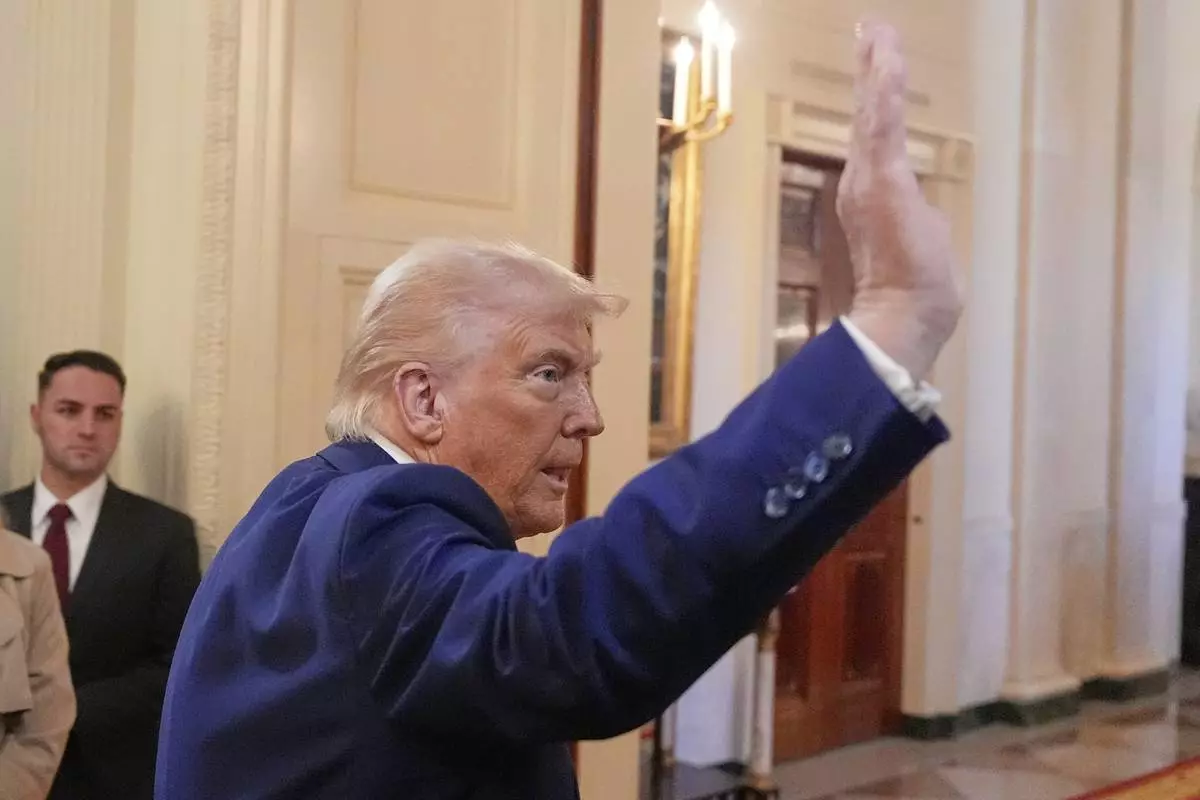
President Donald Trump departs after an event in the East Room of the White House, Tuesday, April 8, 2025, in Washington. (AP Photo/Alex Brandon)






